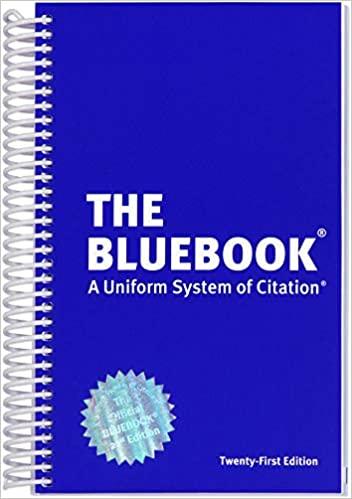Question
YOU AND I was a thoroughbred racehorse owned by a syndicate composed of 4o equal ownership shares. The syndicate agreement stated that if an acceptable
"YOU AND I" was a thoroughbred racehorse owned by a syndicate composed of 4o equal ownership shares. The syndicate agreement stated that if an acceptable offer was made to purchase the horse from the syndicate, each syndicate memberhad a "first right to purchase" under which he could sell his interest in the horse or buy the interests of the other syndicate members who had elected to sell their interests in the horse. The syndicate agreement, however, required that if a syndicate member planned to exercise his first right to purchase, he had to notify the syndicate manager of his intent within 10 days of his receiving notification of the acceptable offer. In September 2003, Brereton Jones, a syndicate member and the syndicate manager received and offer from blooming Hills Farms to buy YOU AND 1 for $500,000. Jones sent a memo to all the syndicate member notifying them that Blooming Hills Farms had made the offer, that he believed the offer to be fair, and that he planned to sell his interest. Jones received word from 39 of the 40 syndicate members that they planned to sell their interests in YOU AND I. the following day, Never Tell Farm, a syndicate member, notified Jones that to planned to exercise its first right to purchase. Jones and Never Tell proceeded to negotiate over whether Never Tell that it had not timely asserted its right and this the horse had been sold to Blooming Hills Farms. Never Tell sued Jones, claiming that under the syndicate agreement it should have had the right to purchase the other syndicate member' interests in YOU AND I. with whom do you think the court sided in this case? why?
[Never Tell Farm, LLC v. Airdrie Stud, Inc., 123 Fed. Appx. 194 (2005)]
- Identify the parties involved in the case dispute (who is the plaintiff and who is the defendant).
- Identify the facts associated with the case and fact patterns.
- Develop the appropriate legal issue(s) in question (i.e., the specific legal issue between the two parties).Provide a judgment on who should win the case - be clear.
- Support your decision with an appropriate rule of law
Step by Step Solution
There are 3 Steps involved in it
Step: 1

Get Instant Access to Expert-Tailored Solutions
See step-by-step solutions with expert insights and AI powered tools for academic success
Step: 2

Step: 3

Ace Your Homework with AI
Get the answers you need in no time with our AI-driven, step-by-step assistance
Get Started


